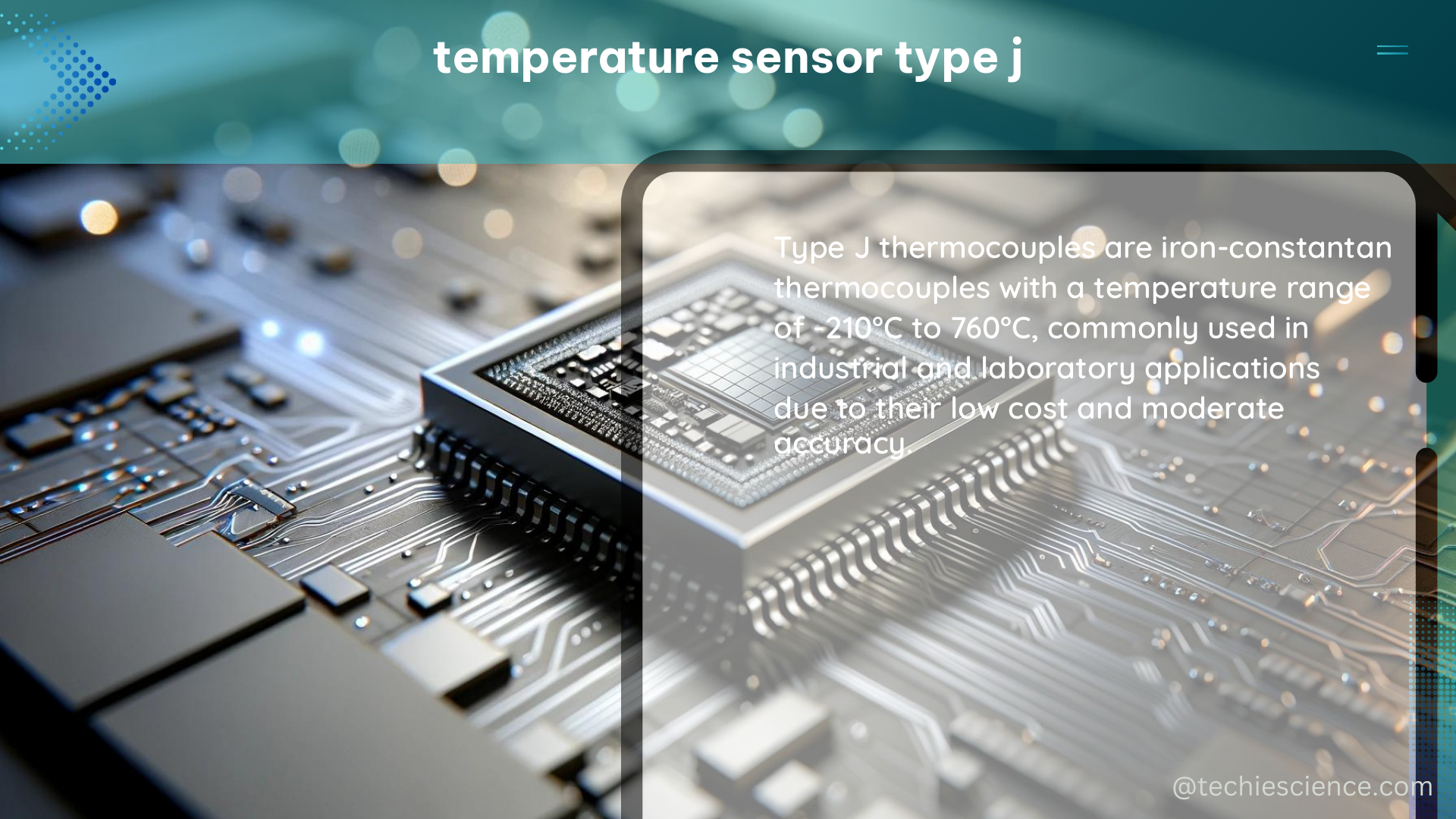Type J thermocouples are a widely used temperature measurement device that converts temperature changes into electrical signals. These thermocouples are composed of a positive leg made of iron and a negative leg made of constantan (a copper-nickel alloy), making them a popular choice for a variety of applications. In this comprehensive guide, we will delve into the technical details, performance characteristics, and practical considerations of Type J thermocouples.
Temperature Range and Suitability
Type J thermocouples have a wide operating temperature range, suitable for a variety of applications. The thermocouple grade wire can withstand temperatures from -40°C to 750°C, while the extension wire is rated for 32°C to 200°C. This wide range makes Type J thermocouples well-suited for use in oxidizing atmospheres, as they are not susceptible to aging within the temperature range of 371°C to 538°C.
However, it is important to note that Type J thermocouples should not be used in high-temperature, oxidizing environments, as the iron in the positive leg can undergo a molecular change, permanently altering the voltage output and compromising the accuracy of the temperature measurement.
Sensitivity and Output

The sensitivity of a Type J thermocouple is approximately 50 microvolts per degree Celsius, providing a 1mV output for every 18 degrees Celsius change in temperature. This relatively high sensitivity allows for precise temperature measurements, making Type J thermocouples a popular choice in applications where accurate temperature data is crucial.
Accuracy and Tolerance
The standard accuracy for Type J thermocouples is ±2.2°C or ±0.75%, while the special limits of error are ±1.1°C or 4%. The standard tolerance for the commonly used MgO (magnesium oxide) insulation in Type J thermocouples is ±2.2°C or ±0.75%.
To ensure the highest accuracy, it is essential to use the appropriate thermocouple extension cables and avoid mixing different types of compensating cables, as this can introduce errors in the temperature measurement.
Advantages and Limitations
Type J thermocouples offer several advantages, including:
- Low Cost: The materials used in the construction of Type J thermocouples, such as iron and constantan, are relatively inexpensive, making them a cost-effective temperature measurement solution.
- High Accuracy: With a standard accuracy of ±2.2°C or ±0.75%, Type J thermocouples provide reliable and precise temperature measurements.
- Rapid Response: The compact design and low thermal mass of Type J thermocouples allow for a rapid response to temperature changes, making them suitable for applications that require fast temperature monitoring.
- Low Fabrication Cost: The manufacturing process for Type J thermocouples is relatively simple, contributing to their low fabrication cost.
However, Type J thermocouples also have some limitations:
- Low Spatial Resolution: Due to their single-point measurement capability, Type J thermocouples have limited spatial resolution, making them less suitable for applications that require detailed temperature mapping.
- Susceptibility to Oxidation: The iron wire in the positive leg of the thermocouple can rust in humid conditions, leading to inaccurate temperature readings. This makes Type J thermocouples less suitable for use in damp environments or low-temperature applications.
- Temperature Limitation: Type J thermocouples are not recommended for use in temperatures above 760°C, as the iron in the positive leg can undergo a molecular change, permanently altering the voltage output.
DIY Considerations
Using a Type J thermocouple for temperature measurement requires connecting it to a voltmeter or a data logger that can measure the voltage output of the thermocouple. It is essential to use only compensating or specific extension cables when extending the distance between the thermocouple and the measuring instrument. Avoid using copper or other types of compensating cables, as this can introduce errors in the temperature measurement.
When setting up a Type J thermocouple system, ensure that the thermocouple is properly installed and positioned to accurately measure the desired temperature. Consider factors such as the thermal environment, sensor placement, and any potential sources of interference that could affect the temperature reading.
Conclusion
Type J thermocouples are a versatile and widely used temperature measurement device, offering a combination of high accuracy, rapid response, and low fabrication cost. By understanding the technical details, performance characteristics, and practical considerations of Type J thermocouples, users can make informed decisions and ensure accurate and reliable temperature measurements in a variety of applications.
References
- Tempsens. (n.d.). Type J Thermocouple. Retrieved from https://tempsens.com/blog/type-j-thermocouple
- NCBI. (2018). Thermal sensing in fluid at the micro-nano-scales. Retrieved from https://www.ncbi.nlm.nih.gov/pmc/articles/PMC6404956/
- Thermocoupleinfo. (n.d.). Type J Thermocouple. Retrieved from https://www.thermocoupleinfo.com/type-j-thermocouple.htm
- Labfacility. (n.d.). Thermocouple Theory and Practice. Retrieved from https://www.labfacility.com/thermocouple-theory-and-practice
- RS Components. (n.d.). Thermocouple Selection Guide. Retrieved from https://docs.rs-online.com/96d5/0900766b815e5302.pdf

The lambdageeks.com Core SME Team is a group of experienced subject matter experts from diverse scientific and technical fields including Physics, Chemistry, Technology,Electronics & Electrical Engineering, Automotive, Mechanical Engineering. Our team collaborates to create high-quality, well-researched articles on a wide range of science and technology topics for the lambdageeks.com website.
All Our Senior SME are having more than 7 Years of experience in the respective fields . They are either Working Industry Professionals or assocaited With different Universities. Refer Our Authors Page to get to know About our Core SMEs.